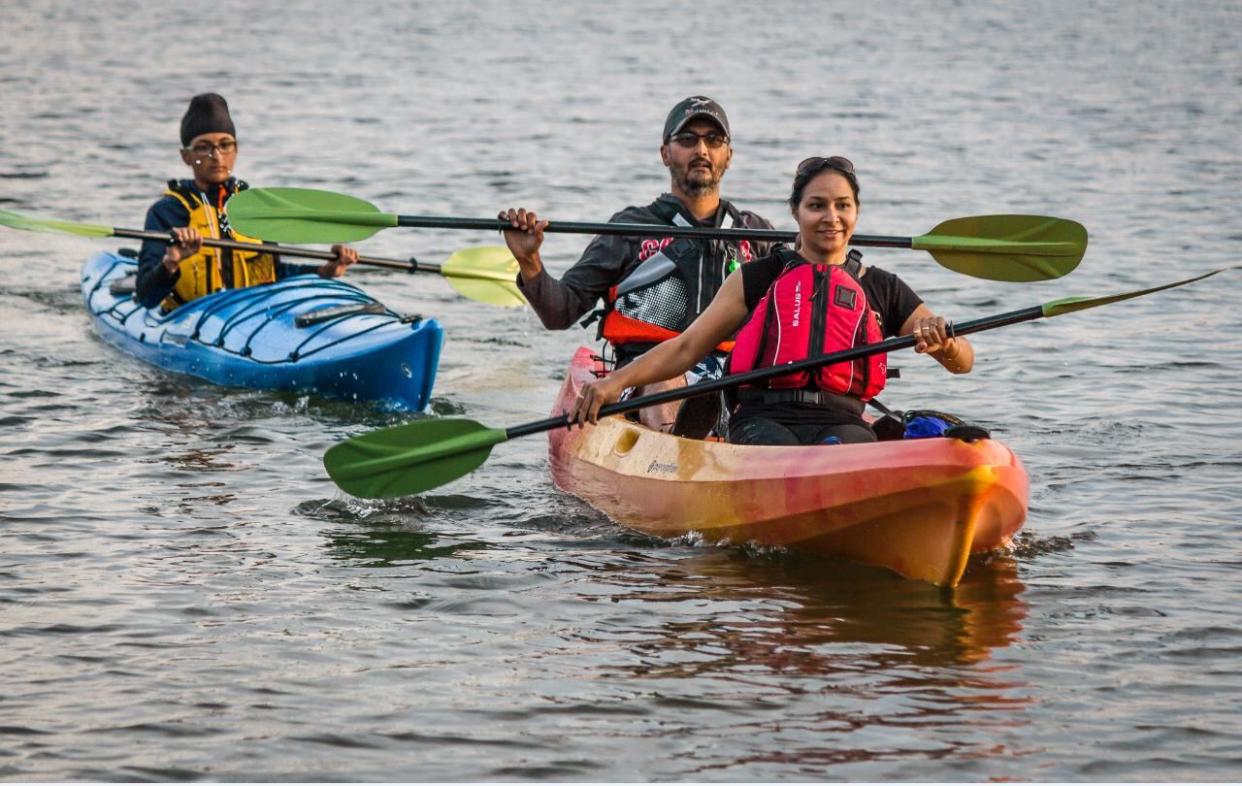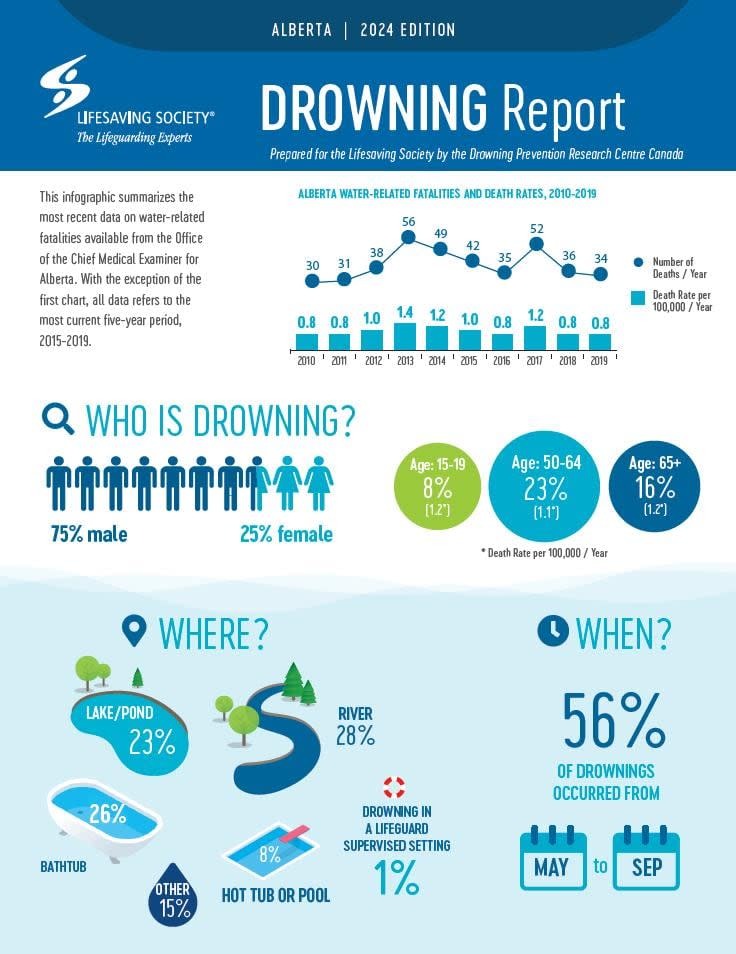Albertans urged to 'think safety' around lakes, rivers and pools as summer approaches

As the weather warms up, Albertans are being reminded to be cautious around lakes, rivers, pools and other bodies of water.
There were 605 drowning deaths reported in Alberta between 2010 and 2023.
Data from the province reveals 202 drowning deaths occurred in the past four years. Those numbers do not include homicides, and 159 of the deaths were deemed accidental.
"A lot of the time, you look at a lake or a river … and it looks calm or it looks nice and inviting," said Jonathan Kusyanto, executive director of the Lifesaving Society Alberta and Northwest Territories.
"But there's usually a lot of hazards that you can't see underneath the water's surface."
The latest Lifesaving Society report shows 403 of Alberta's water-related fatalities occurred between 2010 and 2019.
More than half those drowning incidents occurred between May and September, and 75 per cent of victims were male, according to the report.
"Anecdotally, we've seen an increase in people just recreating outdoors more along rivers and lakes. And we know that unsupervised environments are usually where drownings occur," he said.
The biggest risk factors include not wearing a life-jacket, alcohol consumption, being alone and being a weak swimmer.
Alberta drowning deaths:
2020 — 49 (41 accidental).
2021 — 69 (52).
2022 — 52 (39).
2023 — 32 (27).
(2022 and 2023 numbers yet to be finalized by the Office of the Chief Medical Examiner)
Kusyanto said he's aware of a number of river-related incidents last year.
"We recommend that all individuals avoid swimming in rivers. Rivers are unpredictable. Their conditions can change day to day and even hour to hour," he said.
There are about 158 non-fatal emergency department visits a year, on average, according to Kusyanto.
He said it's still unclear how early pandemic pool closures affected the accessibility of swim lessons.
"We're hoping that those individuals that missed out … are going to have opportunities to get in the water and learn to be safe."
Nearly 300,000 go through the Lifesaving Society's learn to swim programs every year, he noted.

A new report from the Lifesaving Society shows 75 per cent of drowning victims are male and most of these events occur during the summer months. (Lifesaving Society)
'Don't let your guard down'
"The bottom line is if you're around water, you need to think safety," said Dr. Louis Hugo Francescutti, an Edmonton emergency room physician and professor in the school of public health at the University of Alberta.
Beyond the deaths, he sees many life-changing, water-related injuries in the ER.
"It could be pretty precarious, especially if they've suffered an anoxic brain injury — meaning the brain didn't get enough oxygen — and then they end up with severe brain injuries," he explained.
"Or spinal cord injuries, because diving in water may not result in drowning but it could result in spinal cord injuries, which are obviously very devastating."
Francescutti said there are some key steps people can take to protect themselves, including knowing how to swim (and ensuring your kids know, too), wearing a life-jacket, avoiding drugs and alcohol and supervising children closely.
"Don't let your guard down.… Alcohol and weed make everyone think they're invincible, but it's usually these invincible folks in our emergency department, if they make it there."
Hotel pools are risky, he noted, because they often don't have lifeguards.
Deaths occur in bathtubs, he said, and toddlers can drown in as little as an inch or two of water.
"All these injuries are totally predictable and totally preventable."


